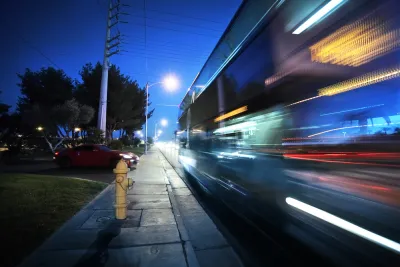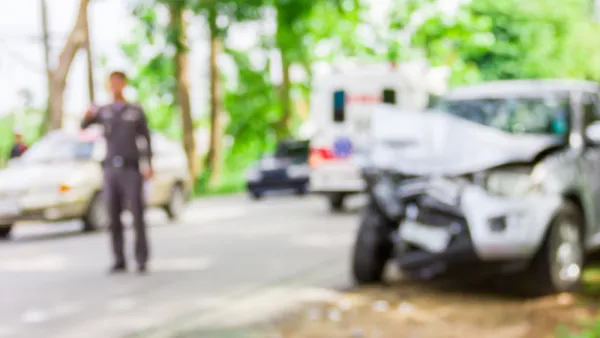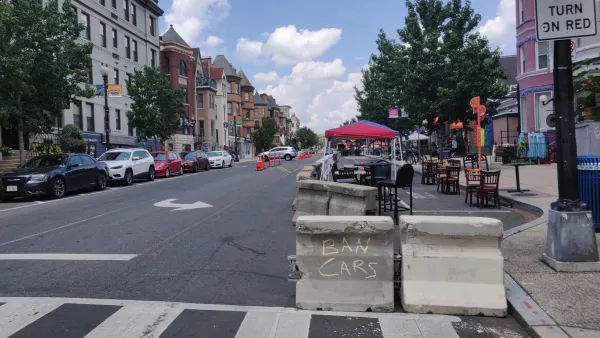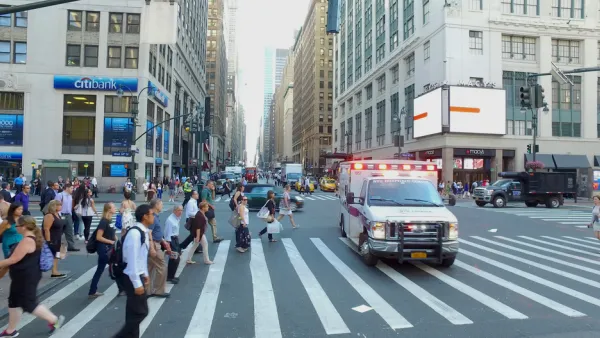The public health epidemic created by dangerous roads, dangerous cars, and dangerous drivers was exacerbated by the COVID-19 pandemic, according to recent data from the National Highway Traffic Safety Administration.

Alissa Walker reports:
An estimated 38,680 people were killed on U.S. roadways in 2020, the National Highway Traffic Safety Administration (NHTSA) confirmed today. This is not just a 7 percent increase from the previous year — it’s the highest number recorded since 2007, it comes after years of (modest) declines, and it happened even as Americans drove 13 percent fewer miles than they had the year before.
The latest data serves as confirmation of preliminary data as well as observations from throughout the pandemic about increasing levels of reckless driving on the relatively empty roads during the pandemic.
Traffic fatalities were up for occupants of passenger vehicles, pedestrians, motorcyclists, and people on bikes. Traffic fatalities were also up according to a litany of metrics like "occupant ejection," on urban interstates, on rural local and collector roads, at night, on the weekend, and due to alcohol, among other measures, according to a press release announcing the new traffic safety data.
That press release includes a soundbite from the acting director of the NHTSA, Steven Cliff, saying that safety is the top priority of the U.S. Department of Transportation. "We intend to use all available tools to reverse these trends and reduce traffic fatalities and injuries,” says Cliff.
According to Walker, the grim statistics are followed by the potential for unprecedented traffic safety reforms at the state level in New York. "For the first time in history, comprehensive and meaningful reform is being proposed in New York State, as a coalition of traffic-safety advocates are supporting eight bills before legislators, including proposed laws that would tighten blood-alcohol limits, allow speed cameras to operate day and night, and create a first-of-its-kind pedestrian-safety rating system for SUVs."
FULL STORY: Traffic Deaths in 2020 Soared to Highest in 13 Years

National Parks Layoffs Will Cause Communities to Lose Billions
Thousands of essential park workers were laid off this week, just before the busy spring break season.

Retro-silient?: America’s First “Eco-burb,” The Woodlands Turns 50
A master-planned community north of Houston offers lessons on green infrastructure and resilient design, but falls short of its founder’s lofty affordability and walkability goals.

Delivering for America Plan Will Downgrade Mail Service in at Least 49.5 Percent of Zip Codes
Republican and Democrat lawmakers criticize the plan for its disproportionate negative impact on rural communities.

Test News Post 1
This is a summary

Test News Headline 46
Test for the image on the front page.

Balancing Bombs and Butterflies: How the National Guard Protects a Rare Species
The National Guard at Fort Indiantown Gap uses GIS technology and land management strategies to balance military training with conservation efforts, ensuring the survival of the rare eastern regal fritillary butterfly.
Urban Design for Planners 1: Software Tools
This six-course series explores essential urban design concepts using open source software and equips planners with the tools they need to participate fully in the urban design process.
Planning for Universal Design
Learn the tools for implementing Universal Design in planning regulations.
EMC Planning Group, Inc.
Planetizen
Planetizen
Mpact (formerly Rail~Volution)
Great Falls Development Authority, Inc.
HUDs Office of Policy Development and Research
NYU Wagner Graduate School of Public Service





























